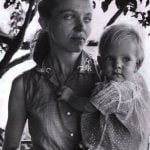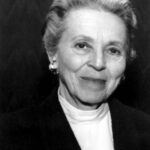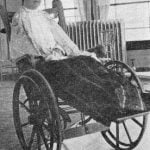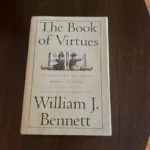
Notable Christians: John G. Paton
Early on in my days of being a new Christian I learned of how important and how inspiring it is to read the stories of great Christians. These stories spoil you for life, and give you a restlessness for the extraordinary. One of the first of the amazing saints I read about was John G. Paton, the Scottish missionary to the New Hebrides.
I still have the old, large hardback autobiography of his – the 1907 edition. When I first read it many decades ago now, it so very deeply impressed me as to how much hardship and suffering one can willingly enter into for the sake of reaching the lost and glorifying God.
 It seemed that on every other page a new calamity, tragedy or catastrophe befell him. And yet he persevered for the sake of uplifting the name of Christ among the cannibals of the New Hebrides. His name is now forever associated with the fully consecrated and committed life of the true servant of Christ.
It seemed that on every other page a new calamity, tragedy or catastrophe befell him. And yet he persevered for the sake of uplifting the name of Christ among the cannibals of the New Hebrides. His name is now forever associated with the fully consecrated and committed life of the true servant of Christ.
Paton was born into a godly household in Scotland in 1824, the eldest of eleven children. They thought nothing of walking four miles to the Reformed Presbyterian Church every Sunday. Early on he had a strong sense of call to the mission field. He spent ten very fruitful years working with the poor as an evangelist for the Glasgow City Mission.
He was ordained in March of 1858, and within weeks married Mary Ann Robson, and set sail for the South Pacific. So successful was his ministry in Glasgow that most folks opposed his overseas move, and they did all they could to dissuade him.
They warned him how dangerous it was, spoke of the horrific cannibalism, and reminded him that martyrdom already happened (the first two missionaries there were killed in 1839). But the call of God lay too strongly upon him. As he said,
“If I die here in Glasgow, I shall be eaten by worms; If I can but live and die serving the Lord Jesus, it will make no difference to me whether I am eaten by cannibals or by worms; for in the Great Day my resurrection body will arise as fair as yours in the likeness of our risen Redeemer.”
So off they set, not knowing what their fate would be. They arrived on the island of Tanna on November 5. His son was born on February 12, 1859. But malaria and pneumonia struck and she died on May 3 at just 19 years of age, with the baby boy dying a few weeks later.
The islands were a stronghold of Satan, and he faced constant threats to his life. Some of his colleagues were killed and eaten by the natives. He came down with malaria and fever over a dozen times, his housing was destroyed more than once by hostile natives or cyclones, and his work was opposed throughout.
Most ordinary believers would have given up just after a month or two of this, but not Paton. He worked, he toiled, he prayed, and he ministered. He stayed there four years enduring dangerous and hostile conditions, until he basically needed to escape with his life.
He spent the next four years in Australia and the United Kingdom to get fresh recruits and stir up interest for the ministry. When he arrived in Sydney he knew no one, and had no contacts, but he persevered. He visited most Presbyterian congregations in southeast Australia, arranging his own meetings. In Victoria he spoke 265 times in 250 days.
On his second trip to Scotland he married Margaret Whitecross in June of 1864. They laboured together for over 40 years in the New Hebrides. They had 10 children, 4 of whom died quite young. They set up orphanages, engaged in education, dispensed medicines, and translated and printed Scripture.
They came to Aniwa in 1866, and after 15 years of hard work and great suffering, the entire island of Aniwa professed faith in Christ. His Aniwa New Testament was eventually printed in 1897, and soon there was the establishment of missionary work on twenty five of the thirty islands of the New Hebrides.
Over the next two decades three major word trips were taken – including the US, Britain and Australia – to alert people to the work on the islands, and the importance of world missions. The first trip commenced in 1884, with the final trip lasting two years in the early 90s, involving some 1400 audiences.
Margaret passed away in 1905 and he died in Melbourne, Australia in 1907. Their legacy endures. Today, a century on for example, the great majority of those in Vanuatu are Christians. And believers the world over look to Paton as a sterling example of the cruciform life, a life sold out completely to Christ, and set on reaching the lost.
Let me finish by simply sharing a few quotes from his autobiography. When I first read it so very long ago as a new believer, I highlighted a number of passages that certainly stood out, and so I here present some of them. The first one alone tells us of his heartache and trials, when he first arrived at the islands:
My dear young wife, Mary Ann Robson, landed with me on Tanna on the 5th November 1858, in excellent health and full of all tender and holy hopes. On the 12th February 1859 God sent to us our first—born son; for two days or so both mother and child seemed to prosper, and our island—exile thrilled with joy! But the greatest of sorrows was treading hard upon the heels of that joy! My darling’s strength showed no signs of rallying. She had an attack of ague and fever a few days before; on the third day or so thereafter, it returned, and attacked her every second day with increasing severity for a fortnight. Diarrhea ensued, and symptoms of pneumonia, with slight delirium at intervals; and then in a moment, altogether unexpectedly, she died on the 3rd March. To crown my sorrows, and complete my loneliness, the dear baby—boy, whom we had named after her father, Peter Robert Robson, was taken from me after one week’s sickness, on the 20th March. Let those who have ever passed through any similar darkness as of midnight feel for me; as for all others, it would be more than vain to try to paint my sorrows!
The women and children were treated appalling by the pagans on these islands, and the gospel was the only way to rescue them:
The girls have, with their mother and sisters, to toil and slave in the village plantations, to prepare all the materials for fencing these around, to bear every burden, and to be knocked about at will by the men and boys. Oh, how sad and degraded is the position of Woman where the teaching of Christ is unknown, or disregarded though known! It is the Christ of the Bible, it is His Spirit entering into humanity, that has lifted Woman, and made her the helpmate and the friend of Man, not his toy or his slave.
His life was in constant dangers, especially in his early years of missionary work. He never knew which day would be his last day:
Next day, a wild Chief followed me about for four hours with his loaded musket, and, though often directed towards me, God restrained his hand. I spoke kindly to him, and attended to my work as if he had not been there, fully persuaded that my God had placed me there, and would protect me till my allotted task was finished. Looking up in unceasing prayer to our dear Lord Jesus, I left all in His hands, and felt immortal till my work was done. Trials and hair-breadth escapes strengthened my faith, and seemed only to nerve me for more to follow; and they did tread swiftly upon each other’s heels. Without that abiding consciousness of the presence and power of my dear Lord and Saviour, nothing else in all the world could have preserved me from losing my reason and perishing miserably. His words, “Lo, I am with you alway, even unto the end of the world,” became to me so real that it would not have startled me to behold Him, as Stephen did, gazing down upon the scene. I felt His supporting power, as did St. Paul, when he cried, “I can do all things through Christ which strengtheneth me.” It is the sober truth, and it comes back to me sweetly after twenty years, that I had my nearest and dearest glimpses of the face and smile of my blessed Lord in those dread moments when musket, club, or spear was being leveled at my life. Oh the bliss of living and enduring, as seeing “Him who is invisible!”


But God sustained him and used these trials for his glory, as well as for Paton’s future ministry:
Oftentimes, while passing through the perils and defeats of my first years in the Mission field on Tanna, I wondered, and perhaps the reader hereof has wondered, why God permitted such things. But on looking back now, I already clearly perceive… that the Lord was thereby preparing me for doing and providing me materials wherewith to accomplish the best work of all my life: the kindling of the heart of Australian Presbyterianism with a living affection for these Islanders of their own Southern Seas… and in being the instrument under God of sending out missionary after missionary to the New Hebrides, to claim another island and still another for Jesus. That work, and all that may spring from it in time and Eternity, never could have been accomplished by me, but for first the sufferings and then the story of my Tanna enterprise!
Incredible stuff. As Paul Schlehlein says early on in his biography of the man:
“Missionaries like Paton need to be heard afresh. Our slumbering congregations devoid of zeal and passion need heroes with his kind of evangelistic pluck. Paton was an icon in his day – a household name in Great Britain and Australia. Contemporaries such as C. H. Spurgeon called him the ‘King of the Cannibals’.”
Amen.
For further reading
One can’t go beyond his autobiography, of which there are now numerous versions and editions. The one I have is this:
John G. Paton, Missionary to the New Hebrides. Fleming H. Revell, 1898, 1907.
Also, one brand new and very helpful volume, and several older works can be mentioned:
Paul Schlehlein, John G. Paton. Banner of Truth, 2017.
Jim Cromarty, King of the Cannibals: The Story of John G. Paton, Missionary To the Hebrides. Evangelical Press, 1998.
Ralph Bell, John G. Paton Apostle to the New Hebrides. The Higley Press, 1957.
[1802 words]




















Hi Bill, The God who supported and preserved the life & ministry of John G. Paton is the same God we worship and serve today. He hasn’t changed (Mal. 3:6) I know we’re not supposed to compare ourselves to others, however, reading your article on John G. Lake does bring the need for severe introspection and more quiet time on my knees. Thanks again Bill, please keep these articles coming, Blessings to you & your family, Kel.
In the late 1980s, my husband and I , being adventurous young 20-somethings, visited Vanuatu (formerly the New Hebrides) and took a day trip on a little 6 seater airplane, to the island of Tanna, which is known for an accessible volcano. We took a harrowing trip for 3 hours through the jungle, to the top of the volcano, getting stuck in the mud on the way and having to help the bus driver dig out the wheels. On returning from the bus trip, we met the chief of the island who was also the head pastor of the Christian church there. We were struck by the fact that this little remote island had had the gospel preached to it, and the islanders had adopted Christianity, although the chief said they still had struggles with cultural persistence to also believe in witch doctors. Back on the main island, we saw the remains of an outdoor church gathering site, which had a plaque to the memory of the family of John Patton.
My late father in law, Pastor Bill Camden, ministered in the New Hebrides / Vanuatu from the early 1960s Bill led the translation team that translated the entire Bible into Bislama. While Bill passed away in 1994, the Bible was published 1998.
Thank-you for this excellent article Bill. I have the privilege of being a friend of one of the great granddaughters of John G Paton, Dr Helen Gillan. She has been my KYB (Know Your Bible) women’s Bible study leader for the past 10+ years. Four generations of the Gillan/Paton family have lived and worked amongst the people of Vanuatu, faithfully spreading the gospel of Jesus Christ. Helen has shared many amazing true stories of God’s miraculous protection and provision that have been handed down to her from her parents, grandparents and great grandparents. Dr Helen has authored the book “Vanuatu Victory” (1988 Spectrum publications) and her older sister, Mary Gillan has written “Wunch Munya,” which begins in Vanuatu and continues with Mary’s missionary work on Cape York Peninsula with indigenous children. Sandra Herrmann
“If I die here in Glasgow, I shall be eaten by worms; If I can but live and die serving the Lord Jesus, it will make no difference to me whether I am eaten by cannibals or by worms; for in the Great Day my resurrection body will arise as fair as yours in the likeness of our risen Redeemer.”
This said everything you needed to know about John G. Paton. Another great man of God said, “Where I fall bury me” (I paraphrase) I can’t remember who it was, such men didn’t see continents, danger or even home but simply the lost that needed saving. Another thing they knew is they needed a godly woman alongside them.
“These stories spoil you for life, and give you a restlessness for the extraordinary.” So true! Similar stories inspired me as a young teenager, as they did my husband. Thanks for this amazing story of John Paton.
Yes it is the glorious stories of sacrifice and miracles at the hands and in the lives of those who have surrendered all to Christ and His kingdom that bring the heart alive and make all else seem like vanity.
Still today only a very small fraction of the church’s energy and finances go toward reaching the unreached and least reached peoples of the world. Oh, that many others would catch the same fire.
Thank you for this testimony, it really hits the nail on the head. These men are set as examples for further generations.
One of the greatest resources I have found for Christian missionary biographies is the Internet Archive. They have several hundred books listed under missions, missionaries, sermons, etc. There are other sites available, but because the IA offers their files free in a PDF format (amongst others) I have found it the most useful for my purposes.
Thanks Bill for this. I grew up attending Christian ENDEAVOUR – is that still going? And we were made familiar with the lives of many faithful missionaries and John Paton was one of them.
Years later one of JOHN PATON’s grandsons Frank was introduced to me not long after I got engaged and discovered that he was a friend of my wife’s family. Consequently I served on the elders council with him in the 1980s at a Uniting CHurch. Frank use to tell of his grandfather’s opposition to the taking of Melanesian people to be used as slaves on the sugar plantations of North Queensland. At a valedictory service to honour his many years as a Church elder – he was in his late 80s then – and parish councillor, he told a story of how John Paton was preaching in the USA and at one church the pastor in introducing him meant to say and here is the sainted Paton but he said instead “let me introduce the painted satan”! Frank said “grandfather dined out on that.”
Thanks Bill, The Vanuatu connection seems popular and for me it is threefold.
-MBI in Melbourne had J Graham Miller as principal when I studied there and he had only recently returned from the Presbyterian mission field in the then New Hebrides.
-We had a business conference at Port Vila “Iriki Resort” and our daughter went to Onesua on the otherside of Efate for the five days to help with the school there. It changed her life by giving her a perspective unobtainable in any other way.
-Our church has strong direct links with the Foursquare Missions in Vanuatu and I have been there three times in connection with that. There was a missions trip to Port Vila. Then a trip to assist with the building of new church shelters after cyclone Pam. Then another missions trip which included Tanna.
Lucy, that would have been Pastor Chief Tom who was at the time the Paramount chief. I preached in his church and stayed at the family’s business “Evergreen” just north of the White Grass airport. I had my photo taken with Tom and his relative, Miss Marie of the Tanna film fame.
On Tanna there is still a lot of superstition including the famous “Prince Phillip” cargo cult.
Everywhere, including on Efate & especially in Port Vila the Christian influence is huge but sadly mixed with many cultural things that we find hard to accommodate. The Chinese are making huge inroads with their “generosity” and it is often hard to discover true motivations, even among mature Christians.
We hear of “revivals” as whole villages respond to the message of salvation. Then we hear other stories that throw doubt on whether the repentance was real and instead convenient.